1976 Democratic Party presidential primaries
The 1976 Democratic presidential primaries were the selection process by which voters of the Democratic Party chose its nominee for President of the United States in the 1976 U.S. presidential election. Former Georgia Governor Jimmy Carter was selected as the nominee through a series of primary elections and caucuses culminating in the 1976 Democratic National Convention held from July 12 to July 15, 1976, in New York City.
| |||||||||||||||||||||||||||||||||||||||||||||||||||||
| |||||||||||||||||||||||||||||||||||||||||||||||||||||
 First place finishes by convention roll call | |||||||||||||||||||||||||||||||||||||||||||||||||||||
| |||||||||||||||||||||||||||||||||||||||||||||||||||||
Schedule and results
| Date | Total pledged
delegates |
Contest | Delegates won and popular vote | ||||||
|---|---|---|---|---|---|---|---|---|---|
| Carter | Wallace | Udall | Jackson | Brown | Church | Uncommitted | |||
| January 19 | 0 | Iowa (caucus) |
10,764 (27.57%) |
– | 2,340 (5.99%) |
429 (1.10%) |
– | – | 14,508 (37.18%) |
| January 24 | 0 | Mississippi (caucus)[1][lower-alpha 1] | 203.96 (13.76%) |
661.36 (44.62%) |
– | – | – | – | 400.17 (27.00%) |
| February 7 | 0 | Oklahoma (county caucus)[2][lower-alpha 2] |
1,304 (18.50%) |
(10.40%) |
– | – | – | – | 2,808 (40.00%) |
| February 14 | 0 | Mississippi (county conventions)[3][lower-alpha 3] | 11.30% |
49.00% |
– | – | – | – | 28.00% |
| February 21 | 19 | Mississippi (district caucuses)[4][lower-alpha 4] | 4 | 9 | – | – | – | – | 3 |
| February 24 | 17 | New Hampshire[5] | 15 23,373 (28.37%) |
1,061 (1.29%) |
2 18,710 (22.71%) |
1,857 (2.25%) |
– | – | – |
| March 2 | 104 | Massachusetts[6] | 16 101,948 (13.86%) |
21 123,112 (16.73%) |
20 130,440 (17.73%) |
30 164,393 (22.34%) |
– | – |
(1.33%) |
| 0 | Vermont[6][lower-alpha 5] | 16,352 (45.84%) | – | – | – | – | – | – | |
| 0 | Washington (caucus)[7][lower-alpha 6] | – | – | – | unknown | – | – | – | |
| March 9 | 81 | Florida[8] | 34 439,870 (34.34%) |
26 392,105 (30.61%) |
26,257 (2.05%) |
21 306,120 (23.90%) |
– | 5,456 (0.43%) |
37,348 (2.92%) |
| March 16 | 169 | Illinois[9][10][lower-alpha 7] | 53 630,915 (48.09%) |
3 361,798 (28.18%) |
– | – | – | – | 113[lower-alpha 8] |
| March 20 | 28[lower-alpha 9] | Oklahoma (district caucuses)[11][lower-alpha 10] | 8 | – | – | – | – | – | 20[lower-alpha 11] |
| March 23 | 61 | North Carolina[12] | 36 324,437 (53.64%) |
25 210,166 (34.75%) |
14,032 (2.32%) |
25,749 (4.26%) |
– | – | 22,850 (3.78%) |
| March 31 | 31 | South Carolina (state convention)[13][lower-alpha 12] | 9 | 8 | – | – | – | 1 | 13 |
| April 3 | 0 | Kansas (caucus)[14][lower-alpha 13] | 232 (38.16%) |
3 (0.49%) |
29 (4.77%) |
43 (7.07%) |
– | 2 (0.33%) |
286 (47.03%) |
| 9 | Oklahoma (state convention)[15][lower-alpha 14] | 4 | – | – | – | – | – | 5[lower-alpha 15] | |
| 0 | Virginia (county caucuses)[16][lower-alpha 16] | 655 (30.30%) |
69 (3.19%) |
88 (4.07%) |
– | – | – | 1,341 (62.03%) | |
| April 6 | 274 | New York[17][18][19][lower-alpha 17] | 35 | – | 72 | 102 | – | – | 65 |
| 68 | Wisconsin[20] | 25 271,220 (36.63%) |
92,460 (12.49%) |
26 263,771 (35.62%) |
47,605 (6.43%) |
– | – | 7,154 (0.97%) | |
| April 10 | 40 | Iowa (district caucuses)[21][lower-alpha 18] | 17 | – | 10 | – | – | – | 11 |
| April 21 | 0 | Missouri (county caucuses)[22][lower-alpha 19] | 111 (13.23%) |
– | 43 (5.13%) |
18 (2.15%) |
– | – | 547 (65.20%) |
| April 26 | 25 | Arizona (caucus)[23] | 4 2,520 (13.23%) |
1 1,691 (6.97%) |
20 17,318 (71.39%) |
1,335 (5.50%) |
– | 388 (1.60%) |
716 (2.95%) |
| April 27 | 178 | Pennsylvania[24][lower-alpha 20] | 64 511,905 (36.95%) |
3 155,902 (11.25%) |
22 259,166 (11.25%) |
19 340,340 (24.57%) |
– | – | 53 |
| May 1 | 98 | Texas[25] | 92 736,161 (47.65%) |
270,798 (17.53%) | – | – | – | – | 129,478 (8.38%) |
| May 4 | 27 | Alabama[26][lower-alpha 21] | – | 12 | – | – | – | – | – |
| 50 | Georgia[27] | 50 419,272 (83.44%) |
57,594 (11.46%) | 9,755 (1.94%) | 3,358 (0.67%) | – | 2,477 (0.49%) | – | |
| 75 | Indiana[27] | 66 (67.95%) |
9 (15.16%) |
– | (11.73%) |
– | – | – | |
| 13 | Washington, D.C.[28][29] | 4 10,521 (31.60%) |
– | 4 6,999 (21.02%) |
– | – | – | 5[lower-alpha 22] 15,310 (45.99%) | |
| May 11 | 0 | Connecticut[30] | 35,415 (33.16%) |
– | 32,959 (30.86%) |
18,962 (17.75%) |
– | – | 13,774 (12.90%) |
| 0 | Missouri (county caucuses)[31][lower-alpha 23] | 47 (30.13%) |
– | – | – | – | – | [lower-alpha 24] 101 (64.74%) | |
| 23 | Nebraska[32] | 8 65,833 (37.62%) |
5,567 (3.18%) |
4,688 (2.68%) |
2,642 (1.51%) |
– | 15 67,297 (38.45%) |
– | |
| 33 | West Virginia | – | 40,938 (10.99%) |
– | – | – | – | 33[lower-alpha 25]
331,639 (89.01%) | |
| May 18 | 53 | Maryland[lower-alpha 26] | 32 217,166 (37.08%) |
23,690 (4.09%) |
7 31,372 (5.54%) |
10 13,565 (2.36%) |
284,271 (48.45%) |
– | 4 |
| 133 | Michigan | 69 306,301 (43.40%) |
2 49,260 (6.94%) |
58 304,297 (43.06%) |
10,613 (1.46%) |
– | – | 4 15,529 (2.24%) | |
| May 22 | 12 | Vermont (state convention)[33][lower-alpha 27] | 3 | – | 3 | – | 2 | – | 4 |
| May 25 | 26 | Arkansas[34] | 17 314,277 (62.23%) |
5 83,005 (16.54%) |
1 37,783 (7.53%) |
9,554 (1.90%) |
– | – | 3 57,145 (11.39%) |
| 16 | Idaho[34] | 2 8,818 (11.85%) |
1,115 (1.50%) |
981 (1.32%) |
485 (0.65%) |
1,453 (1.95%) |
14 58,570 (78.72%) |
964 (1.30%) | |
| 46 | Kentucky[34] | 37 181,690 (59.38%) |
7 51,540 (16.84%) |
2 33,262 (10.87%) |
8,186 (2.68%) |
– | – | 11,962 (3.91%) | |
| 54 | Missouri (district conventions)[35][lower-alpha 28] | 28 | – | 3 | 1 | – | – | 21 | |
| 11 | Nevada[34] | 3 17,567 (23.35%) |
2,490 (3.31%) |
2,237 (2.97%) |
1,896 (2.52%) |
6 39,671 (52.73%) |
1 6,778 (9.01%) |
1 4,603 (6.12%) | |
| 34 | Oregon[34] | 12 115,310 (26.65%) |
5,797 (1.34%) |
11,747 (2.72%) |
5,298 (1.23%) |
7 105,812 (24.69%) |
15 145,394 (33.61%) |
– | |
| 46 | Tennessee[34] | 36 259,243 (77.60%) |
1 36,495 (10.92%) |
12,420 (3.72%) |
5,672 (1.70%) |
1,556 (0.47%) |
8,026 (2.40%) |
9 6,148 (1.84%) | |
| May 29 | 7 | Iowa (state convention)[36][lower-alpha 29] | 3 | – | 2 | – | – | – | 2 |
| May 30 | 17 | Hawaii (state convention)[36][lower-alpha 30] | – | – | 1 | 1 | – | – | 15 |
| June 1 | 17 | Montana[37] | 4 26,329 (24.64%) |
3,680 (3.44%) |
6,708 (6.28%) |
2,856 (2.67%) |
– | 11 63,448 (59.39%) |
2
3,820 (3.58%) |
| 22 | Rhode Island[37] | 7 18,237 (30.22%) |
507 (0.84%) |
2,543 (4.21%) |
756 (1.25%) |
–[lower-alpha 31] | 6
16,423 (27.21%) |
9[lower-alpha 32] 63,448 (59.39%) | |
| 17 | South Dakota[37] | 9 24,186 (41.22%) |
1,412 (2.41%) |
7 19,510 (33.25%) |
558 (0.95%) |
– | – | 1
7,871 (13.42%) | |
| June 6 | 16 | Minnesota (state convention)[38] | – | – | – | – | – | – | 16[lower-alpha 34] |
| June 8 | 300 | California[39] | 67 697,092 (20.44%) |
102,292 (3.00%) |
2 171,501 (5.03%) |
38,634 (1.13%) |
204 2,013,210 (59.04%) |
7 250,581 (7.35%) |
78,595 (2.31%) |
| 0 | New Jersey (preferential)[39][lower-alpha 35] | 210,655 (58.38%) |
31,183 (8.64%) |
– | 31,820 (8.82%) |
– | 49,034 (13.59%) |
– | |
| 108 | New Jersey | 25 129,455 (27.97%) |
28,944 (6.25%) |
59,365 (12.83%) |
– | – | 30,722 (6.68%) |
83 194,673 (42.06%) | |
| 152 | Ohio[39] | 126 593,130 (52.29%) |
63,953 (5.64%) |
20 240,342 (21.19%) |
35,404 (3.12%) |
– | 157,884 (13.92%) |
6[lower-alpha 36]
43,661 (3.85%) | |
| Estimated pledged delegates | 1,012 | 132 | 282 | 184 | 217 | 70 | 501 | ||
- There is only one detailed breakdown of the results given, and it is only with 50% of the precincts reporting. 'Votes' are also actually delegates elected for a latter round of county conventions.
- While earlier reports on the Caucus gave results for each candidate, they last did so with the count at 70% of precincts reporting; lacking the votes for Bentsen, Wallace and Others, it isn't possible to determine the exact results. Votes' are also actually delegates elected for a latter round of county conventions.
- Only general percentages were given.
- Only general percentages were given.
- Delegates were picked at later caucuses and conventions held in April and May.
- Only report available is an unofficial one from the Jackson campaign, and no real information is given other then he won.
- Delegates were elected separately.
- Uncommitted here represents a number of different camps. The largest with 85 delegates was controlled Chicago Mayor Richard Daley, who had used Senator Adlai Stevenson III as a stand-in. 18 truly uncommitted delegates were divided into two camps, one led by congressman Paul Simon and the other by state treasurer Alan Dixon, both inclined to supporting Hubert Humphrey's potential entrance into the race; another 6 delegates were actually pledged to Humphrey. The final 4 were pledged to Governor Daniel Walker, who had been engaged in a number of power struggles with Richard Daley.
- Oklahoma elected five delegates pledged to Fred Harris.
- Vote results not available.
- 5 delegates were pledged to Fred Harris.
- Only the apportionment of delegates was given.
- Only partial delegate results available.
- Only 608 of the 664 delegates elected are accounted for here.
- 2 delegates were pledged to Fred Harris.
- Only article with any accounting of the elected delegates only has 2,162 of 3,040 accounted for.
- The situation in New York is complicated in that the rather than voting for the candidates themselves, voters were instead voting for the individual delegates; it wasn't uncommon for the allegiance of some of these delegates to be ill-defined. These results only list the votes of the winning delegates, some of which were altered slightly later, and not even all the delegates are on it.
- Only Delegate results are reported
- The vote shown is of delegates elected to participate in the future District Caucuses. Also the breakdown only accounts for 719 of 839 delegates.
- Only 44 of Pennsylvania's 178 delegates were effected by the Presidential Primary; 134 delegates were elected in a separate series of primaries held concurrently.
- There was no presidential preference primary; delegate primaries were held instead. As majorities were required, run-offs were held later in those primaries that only resulted in a plurality. No vote totals were given.
- There were two Unpledged slates running in the primary. One, led by Reverend Walter Fauntroy, received 10,419 votes and won the three delegates. The other, led of Mayor Walter Washington, received 5,161 votes.
- These counties did not participate in the earlier county caucuses. Also, votes are actually delegates elected to the District Caucuses; they aren't all accounted for.
- Votes were cast for favorite son Robert Byrd. By state law, all delegates are Unpledged.
- Votes were cast for favorite son Robert Byrd. By state law, all delegates are Unpledged.
- Delegates were elected in a separate series of primaries, independent of the Presidential preference primary.
- No vote count is given for the delegate selection.
- No vote count is given for the delegate selection.
- No vote count is given for the delegate selection.
- No vote count is given for the delegate selection.
- The uncommitted slate was publicly endorsed and supported by Jerry Brown.
- The uncommitted slate was publicly endorsed and supported by Jerry Brown.
- No vote count is given for the delegate selection.
- 13 of the 16 delegates were pledged to Hubert Humphrey.
- New Jersey held separate primaries for the Presidential candidates and the state delegates.
- The unpledged slate was headed by State Treasurer Gertrude Donahey. The 6 elected delegates listed here are technically pledged to favorite son candidate Carl Stokes, a former mayor of Cleveland.
Primary race
The Watergate scandal, resignation of Richard Nixon, American withdrawal from Vietnam, and recession of 1974-75 dominated domestic issues in the runup to the presidential election of 76. President Gerald Ford had squandered his early popularity with an unconditional pardon of Nixon and his perceived mishandling of the recession, and by late 1975 had slumped badly in national polls.
Due to the absence of any clear front-runner for the nomination and a political climate that seemed tilted heavily in their party's favor, a record number of Democrats competed for their party's presidential nomination in 1976. However, most of these candidates would drop out early in the race.
The 1976 campaign featured a record number of state primaries and caucuses, and it was the first presidential campaign in which the primary system was dominant. However, most of the Democratic candidates failed to realize the significance of the increased number of primaries, or the importance of creating momentum by winning the early contests. The one candidate who did see the opportunities in the new nominating system was Jimmy Carter, a former state senator and Governor of Georgia. Carter, who was virtually unknown at the national level, would never have gotten the Democratic nomination under the old, boss-dominated nominating system, but given the public disgust with political corruption following Richard Nixon's resignation, Carter realized that his obscurity and "fresh face" could be an asset in the primaries. Carter's plan was to run in all of the primaries and caucuses, beginning with the Iowa caucuses, and build up momentum by winning "somewhere" each time primary elections were held. Carter startled many political experts by finishing second in the Iowa caucuses (behind "uncommitted" and ahead of Indiana Senator Birch Bayh). Arizona Congressman Morris Udall, who had been leading in the polls at one point, came in fifth behind former Oklahoma Senator Fred R. Harris, leading Harris to coin the term "winnowed in", referring to his surprisingly strong showing.[40][41][42][43] Carter then won the New Hampshire primary on February 24, thus proving that a Southerner could win in the North. He then proceeded to slowly but steadily accumulate delegates in primaries around the nation. He also knocked his key rivals out of the race one by one. He defeated former Alabama Governor George Wallace in the North Carolina primary March 23, thus eliminating his main rival in the South. He defeated Washington Senator Henry "Scoop" Jackson in Pennsylvania April 27, and Jackson quit the race. In the Wisconsin primary on April 6, Carter scored an impressive come-from-behind victory over Mo Udall, and eliminated Udall as a serious contender.
Idaho Senator Frank Church and California Governor Jerry Brown announced their candidacies for the Democratic nomination and defeated Carter in several late primaries. However, their campaigns started too late to prevent Carter from gathering the remaining delegates he needed to capture the nomination.
Candidates
Nominee
| Candidate | Born | Most recent position | Home state | Campaign | Popular vote | Contests won | Running mate |
|---|---|---|---|---|---|---|---|
 Jimmy Carter |
October 1, 1924 (Age 52) Plains, Georgia |
Former Governor of Georgia (1971–1975) |
.svg.png) Georgia |
.jpg) Nominated at convention: July 15, 1976 |
6,235,609 (39.19%) |
30
ME, NH, VT, CT, RI NJ, DE, PA, VA, NC FL, GA, TN, KY, OH MI, IL, IN, WI, IA LA, AR, MO, TX, OK KS, CO, NM, SD, DC |
Walter Mondale |
Eliminated at convention
| Candidate | Most recent position | Home state | Campaign | Popular vote | Contests won | ||
|---|---|---|---|---|---|---|---|
| Jerry Brown | 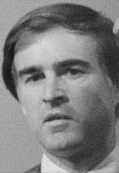 |
Governor of California (1975–1983) |
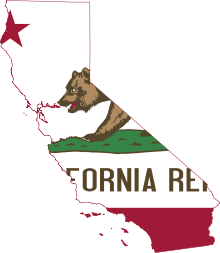 California |
 Announced campaign: March 16, 1976 |
2,449,374 (15.4%) |
3 CA, MD, NV | |
| George Wallace |  |
Governor of Alabama (1963–1967; 1971–1979) |
 Alabama |
 Announced campaign: November 1, 1975 |
1,955,388 (13.76%) |
3 AL, MS, SC | |
| Mo Udall | .jpg) |
U.S. Representative for Arizona's 2nd congressional district (1961–1991) |
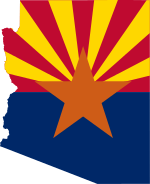 Arizona |
Announced campaign: November 23, 1974 |
1,611,754 (10.13%) |
3 AZ, HI, WY | |
| Ellen McCormack | Chair of the New York Right to Life Party (1970–1976) |
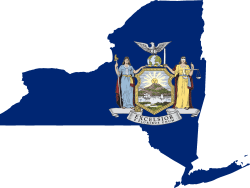 New York |
 |
238,027 (1.50%) |
None | ||
Withdrew before convention
| Candidate | Most recent position | Home state | Campaign | Popular vote | Contests won | ||
|---|---|---|---|---|---|---|---|
| Frank Church | 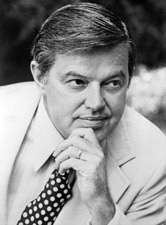 |
U.S. Senator from Idaho
(1957–1981) |
 Idaho |
Announced campaign: March 18, 1976 Withdrew: June 14, 1976 (Endorsed Carter) |
830,818 (5.22%) |
5 ID, MT, NE, OR, UT | |
| Henry M. Jackson |  |
U.S. Senator from Washington (1953–1983) |
 Washington |
Announced campaign: February 1, 1975 Withdrew: May 1, 1976 |
1,134,375 (7.13%) |
4 AK, MA, NY, WA | |
| Sargent Shriver | 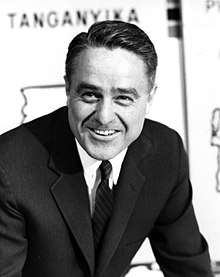 |
Democratic nominee for Vice President of the United States in 1972 |
 Maryland |
Announced campaign: |
304,399 (1.91%) |
None | |
| Fred Harris |  |
Former U.S. Senator from Oklahoma (1964–1973) |
Oklahoma |
Announced campaign: January 11, 1975 Withdrew: April 2, 1976 |
234,568 (1.47%) |
None | |
| Milton Shapp |  |
Governor of Pennsylvania (1970–1978) |
 Pennsylvania |
Announced campaign: September 25, 1975 Withdrew: April 27, 1976 |
88,254 (0.56%) |
None | |
| Birch Bayh | 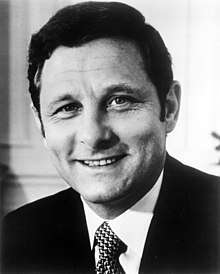 |
U.S. Senator from Indiana (1969–1981) |
 Indiana |
Announced campaign: October 21, 1975 Withdrew: March 4, 1976 |
86,438 (0.54%) |
None | |
| Lloyd Bentsen | 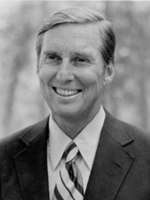 |
U.S. Senator from Texas
(1971–1993) |
 Texas |
 Announced campaign: February 17, 1975 Withdrew: May 1, 1976 |
4,046 (0.03%) |
None | |
| Terry Sanford | 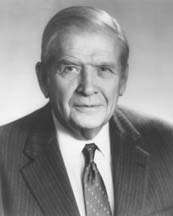 |
Former Governor of North Carolina (1961–1965) |
North Carolina |
 Announced campaign: June 1, 1975 Withdrew: January 25, 1976 |
404 (0.00%) |
None | |
Favorite son candidates
The following candidates ran only in their home state or district's delegate elections for the purpose of controlling those delegates at the national convention:
- Senator Robert C. Byrd of West Virginia
- Mayor Walter Washington of the District of Columbia
- Delegate Walter Fauntroy of the District of Columbia
Declined to run
- Senator Hubert Humphrey of Minnesota
- Senator Ted Kennedy of Massachusetts
- Mayor of New York City John Lindsay
- Senator George McGovern of South Dakota
- Senator Walter Mondale of Minnesota (formed exploratory committee)[45]
- Senator Edmund Muskie of Maine
- Senator Adlai Stevenson III of Illinois
- Senator John Tunney of California
Polling
National polling
Before August 1974
| Poll source | Publication | Sample size | |||||||||
|---|---|---|---|---|---|---|---|---|---|---|---|
| Gallup[46] | July 14, 1973 | 659 A | – | 4% | 40% | 8% | 9% | 3% | 16% | 16%[lower-alpha 1] | 9% |
| Gallup | Nov. 2–5, 1973 | 627 | 3% | 6% | 41% | 6% | 9% | 4% | 15% | 6%[lower-alpha 2] | 10% |
| 5% | 9% | – | 16% | 17% | 7% | 20% | 12%[lower-alpha 3] | 14% | |||
| Gallup | Feb. 22–March 4, 1974 | 677 | 2% | 8% | 44% | 7% | 7% | 2% | 17% | 5%[lower-alpha 4] | 6% |
| 3% | 11% | 49% | 8% | 10% | 5% | – | 7%[lower-alpha 5] | 7% | |||
| 3% | 13% | – | 20% | 13% | 7% | 26% | 8%[lower-alpha 6] | 10% | |||
- Hubert Humphrey with 8%, John Lindsay with 2%, Sargent Shriver with 2%, and Reubin Askew, Walter Mondale, William Proxmire, and John Tunney with 1% each
- Walter Mondale and William Proxmire with 2% each, and Robert Byrd and John Tunney with 1% each
- William Proxmire with 4%, Walter Mondale and John Tunney with 3% each, and Robert Byrd with 2%
- Walter Mondale with 2% and William Proxmire, John Tunney, and Robert Byrd with 1% each
- Walter Mondale with 2%, William Proxmire with 2%, John Tunney with 2%, and Robert Byrd with 1%
- Walter Mondale with 3%, John Tunney and William Proxmire with 2% each, and Robert Byrd with 1%
August 1974–January 1976
| Poll source | Publication | Sample size | |||||||||||
|---|---|---|---|---|---|---|---|---|---|---|---|---|---|
| Gallup[47] | Sept. 27, 1974 | ? | – | – | – | 9% | 46% | 6% | 8% | – | 16% | 8%[lower-alpha 1] | 7% |
| – | – | – | 14% | – | 17% | 17% | – | 28% | 14%[lower-alpha 2] | 11% | |||
| Gallup[48] | Dec. 5, 1974 | ? | 2% | – | 11% | 10% | – | 6% | 6% | 1% | 19% | 30%[lower-alpha 3] | 15% |
| Gallup[49] | March 31, 1975 | ? | – | – | 16% | 13% | – | 10% | 9% | – | 22% | 21%[lower-alpha 4] | 9% |
| Gallup[50] | May 2–5, 1975 | 675 | – | – | 9% | 6% | 36% | 2% | 4% | – | 15% | 28%[lower-alpha 4] | |
| Gallup[51] | Aug. 7, 1975 | ? | – | – | 9% | 6% | 42% | 5% | 6% | – | 15% | 17%[lower-alpha 4] | |
| – | – | 20% | 10% | – | 11% | 10% | 2% | 23% | 12%[lower-alpha 4] | 12% | |||
| Gallup[52][53] | Oct. 26, 1975 | ? | – | – | 13% | 11% | 35% | 4% | 5% | 4% | 14% | 9%[lower-alpha 4] | 8% |
| – | – | 23% | 11% | – | 9% | 9% | 8% | 20% | 9%[lower-alpha 4] | 9% | |||
| Gallup[54] | Nov. 21–24, 1975 | 622 | 4% | 2% | 21% | 6% | 29% | 8% | 4% | – | 15% | 11%[lower-alpha 4] | |
| 5% | – | 30% | 10% | – | 10% | 7% | 4% | 20% | 14%[lower-alpha 4] | ||||
| Gallup[55] | Jan. 2–5, 1976 | ? | – | 4% | 20% | 6% | 32% | 5% | 4% | – | 15% | 9%[lower-alpha 4] | |
| 5% | – | 29% | 9% | – | 10% | 6% | 5% | 20% | 16%[lower-alpha 4] | ||||
- William Proxmire with 3%, Eugene McCarthy with 3%, and Walter Mondale with 2%
- Eugene McCarthy with 7%, William Proxmire with 5%, and Walter Mondale with 2%
- John Lindsay with 3%, Julian Bond with 3%, Adlai Stevenson III with 3%, Ralph Nader with 2%, Walter Mondale with 2%, Lloyd Bentsen with 2%, Jerry Brown with 2%, John Glenn with 2%; Reubin Askew, John Tunney, William Proxmire, Dale Bumpers, Robert Byrd, Hugh Carey, Thomas Eagleton, Eugene McCarthy, Gary Hart, Ella Grasso, and Milton Shapp with 1% each; and Brendan Byrne, Terry Sanford, Frank Church, Mo Udall, and Kevin White with <1% each
- Gallup did not break down results for other candidates individually.
1976
| Poll source | Publication | |||||||
|---|---|---|---|---|---|---|---|---|
| Gallup | Jan. 1976 | – | 4% | 2% | 27% | 6% | 6% | 22% |
| Gallup | Mar. 1976 | – | 26% | – | 27% | 15% | 3% | 15% |
| Gallup | Mar. 1976 | – | 28% | – | 30% | 11% | 3% | 16% |
| Gallup | Mar. 1976 | 9% | 29% | 3% | 30% | 7% | – | 13% |
| Gallup | Apr. 1976 | 6% | 28% | 2% | 31% | 8% | – | 13% |
| Gallup | May 1976 | 6% | 39% | 4% | 30% | 4% | – | 9% |
| Gallup | May 1976 | 15% | 36% | 4% | 28% | – | – | 9% |
| Gallup | June 1976 | 15% | 53% | 3% | 13% | – | – | 7% |
Head-to-head polling
Kennedy v. Wallace
| Poll source | Publication | Sample size | |||
|---|---|---|---|---|---|
| Gallup[46] | July 14, 1973 | 659 A | 71% | 22% | 7% |
| Gallup[56] | May 2–5, 1975 | 676 | 69% | 24% | 7% |
Kennedy v. Muskie
| Poll source | Publication | Sample size | |||
|---|---|---|---|---|---|
| Gallup[46] | July 14, 1973 | 659 A | 64% | 26% | 10% |
| Gallup[56] | May 2–5, 1975 | 676 | 70% | 22% | 8% |
Kennedy v. Jackson
| Poll source | Publication | Sample size | |||
|---|---|---|---|---|---|
| Gallup[56] | May 2–5, 1975 | 676 | 70% | 23% | 7% |
Primaries
Overview
| Nominee | |
| Ended campaigns | |
| Iowa caucuses | |
| Massachusetts primary | |
| Pennsylvania primary | |
| Convention 1976 |

Scoop Jackson raised his national profile by speaking out on Soviet Union–United States relations and Middle East policy regularly, and was considered a front-runner for the nomination when he announced the start of his campaign in February 1975. Jackson received substantial financial support from Jewish-Americans who admired his pro-Israel views, but Jackson's support of the Vietnam War resulted in hostility from the left wing of the Democratic Party.
Jackson chose to run on social issues, emphasizing law and order and his opposition to busing. Jackson was also hoping for support from labor, but the possibility that Hubert Humphrey might enter the race caused unions to offer only lukewarm support.[57][58][59][60]
Jackson made the decision not to compete in the early Iowa caucus and New Hampshire primary, which Carter won after liberals split their votes among four other candidates. Though Jackson won the Massachusetts and New York primaries, he dropped out on May 1 after losing the critical Pennsylvania primary to Carter by 12 points and running out of money.[57][58][59][60]
Total popular vote in primaries[61]
- Jimmy Carter - 6,235,609 (39.19%)
- Jerry Brown - 2,449,374 (15.39%)
- George Wallace - 1,955,388 (12.29%)
- Mo Udall - 1,611,754 (10.13%)
- Henry M. Jackson - 1,134,375 (7.13%)
- Frank Church - 830,818 (5.22%)
- Robert Byrd - 340,309 (2.14%)
- Sargent Shriver - 304,399 (1.91%)
- Ellen McCormack - 238,027 (1.50%)
- Fred R. Harris - 234,568 (1.47%)
- Milton Shapp - 88,254 (0.56%)
- Birch Bayh - 86,438 (0.54%)
- Walter Fauntroy - 10,149 (0.05%)[62]
- Walter Washington - 5,161 (0.03%)[63]
- Lloyd Bentsen - 4,046 (0.03%)
- Terry Sanford - 404 (0.00%)
Democratic National Convention
The 1976 Democratic National Convention was held in New York City. By the time the convention opened Carter already had more than enough delegates to win the nomination, and so the major emphasis at the convention was to create an appearance of party unity, which had been lacking in the 1968 and 1972 Democratic Conventions. Carter easily won the nomination on the first ballot; he then chose Senator Walter Mondale of Minnesota, a liberal and a protege of Hubert Humphrey, as his running mate.
The tally at the convention was:[64]
- Jimmy Carter - 2,239 (74.48%)
- Mo Udall - 330 (10.98%)
- Jerry Brown - 301 (10.01%)
- George Wallace - 57 (1.90%)
- Ellen McCormack - 22 (0.73%)
- Frank Church - 19 (0.63%)
- Hubert Humphrey - 10 (0.33%)
- Henry M. Jackson - 10 (0.33%)
- Fred R. Harris - 9 (0.30%)
- Milton Shapp - 2 (0.07%)
- Robert Byrd, Cesar Chavez, Leon Jaworski, Barbara Jordan, Ted Kennedy, Jennings Randolph, Fred Stover - each 1 vote (0.03%)
Vice-Presidential nomination
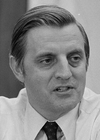 Senator Walter F. Mondale of Minnesota
Senator Walter F. Mondale of Minnesota Senator Edmund S. Muskie of Maine
Senator Edmund S. Muskie of Maine Senator Frank Church of Idaho
Senator Frank Church of Idaho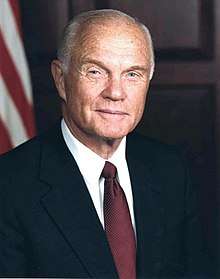 Senator John Glenn of Ohio
Senator John Glenn of Ohio Senator Adlai Stevenson III of Illinois
Senator Adlai Stevenson III of Illinois Senator Henry M. Jackson of Washington
Senator Henry M. Jackson of Washington Congressman Peter W. Rodino of New Jersey
Congressman Peter W. Rodino of New Jersey Congressman Ron Dellums of California
Congressman Ron Dellums of California Congresswoman Barbara Jordan of Texas
Congresswoman Barbara Jordan of Texas
By June, Carter had the nomination sufficiently locked up and could take time to interview potential vice-presidential candidates.
The pundits predicted that Frank Church would be tapped to provide balance as an experienced senator with strong liberal credentials. Church promoted himself, persuading friends to intervene with Carter in his behalf. If a quick choice had been required as in past conventions, Carter later recalled, he would probably have chosen Church. But the longer period for deliberation gave Carter time to worry about his compatibility with the publicity-seeking Church, who had a tendency to be long-winded. Instead, Carter invited Senators Edmund Muskie, John Glenn and Walter Mondale, and Congressman Peter W. Rodino to visit his home in Plains, Georgia, for personal interviews, while Church, Henry M. Jackson, and Adlai Stevenson III would be interviewed at the convention in New York. Rodino revealed he had no interest in the position, and of all the other potential candidates, Carter found Mondale the most compatible. As a result, Carter selected Mondale as his running mate.
African American leadership within the Democratic Party had sought to potentially place Los Angeles Mayor Tom Bradley, Congressman Ron Dellums, or Congresswoman Barbara Jordan on the ticket with Carter. However, Jordan took herself out of consideration, and Carter did not have any interest in the other candidates put forward.
The vice presidential tally, in part, was:
- Walter Mondale 2837
- House Speaker Carl Albert 36
- Ronald Dellums 20
- Fritz Efaw 12
- Barbara Jordan 17
- Others 53
See also
- Republican Party presidential primaries, 1976
Notes
References
- "The New York Times: Thursday July 1, 1976". The New York Times. Retrieved 2 April 2018.
- "Oklahoma Voting Is Won By Carter – He Leads Harris Slightly in Committed Delegates". The New York Times. 17 February 1976. Retrieved 2 April 2018.
- "Wallace Gets 49% in Mississippi Vote". The New York Times. 16 February 1976. Retrieved 2 April 2018.
- "Wallace Wins 9 Mississippi Delegates". The New York Times. 22 February 1976. Retrieved 2 April 2018.
- "Ford Won 18 of 21 Delegates In Primary in New Hampshire". The New York Times. 2 March 1976. Retrieved 2 April 2018.
- "Final Tallies in 2 Races". The New York Times. 4 March 1976. Retrieved 2 April 2018.
- "Jackson Is Seen Winning Most Of Washington State Delegates". The New York Times. 4 March 1976. Retrieved 2 April 2018.
- "Final Totals in Florida Primary". The New York Times. 11 March 1976. Retrieved 2 April 2018.
- "Late Vote Totals In Illinois Races". The New York Times. 18 March 1976. Retrieved 2 April 2018.
- "Ford and Carter Amass Delegates in Illinois Races – Georgian Shows Surprising Strength in the Tabulation, Though Stevenson Leads – New Momentum Seen – Reagan, Resisting, Pressed Again to Quit as Gesture Toward Party Unity Ford and Carter Amassing Delegates". The New York Times. 18 March 1976. Retrieved 2 April 2018.
- "Oklahoma Party Splits on Carter – Uncommitted Do Not Follow Governor's Shift to Georgian". The New York Times. 21 March 1976. Retrieved 2 April 2018.
- "Vote Totals in N. Carolina". The New York Times. 25 March 1976. Retrieved 2 April 2018.
- "South Carolina Democrats Give Carter 9 of Their 31 Delegates". The New York Times. 1 April 1976. Retrieved 2 April 2018.
- "Carter Takes the Lead in Delegate Selections in Kansas Counties". The New York Times. 5 April 1976. Retrieved 2 April 2018.
- "The New York Times: Sunday April 4, 1976". The New York Times. 4 April 1976. Retrieved 2 April 2018.
- "Carter Is Victor in 2 State Races – Virginia and Kansas Returns Show Him With Big Lead in 1st Votes for Delegates". The New York Times. 4 April 1976. p. 1. Retrieved 2 April 2018.
- "State's Delegates to the Conventions". The New York Times. 8 April 1976. Retrieved 2 April 2018.
- "Jackson Won in New York By Narrowly Based Voting; Did Best in Queens and Brooklyn and With Jews and Moderates – Crangle Hails 'Draft Humphrey' Success". The New York Times. 8 April 1976. Retrieved 2 April 2018.
- "Udall Wins All 5 Places On 23rd District Ballot". The New York Times. 9 April 1976. Retrieved 2 April 2018.
- "Ford Easy Victor – Wallace and Jackson Far Behind in Battle in the Midwest – Carter Tops Udall in a Tight Wisconsin Primary – Ford Defeats Reagan Easily – Wallace and Jackson Lag In Presidential Contest". The New York Times. 7 April 1976. Retrieved 2 April 2018.
- "Carter and Udall Lead as Delegates Are Picked In Iowa". The New York Times. 11 April 1976. Retrieved 2 April 2018.
- "Democrats in Missouri Avoiding Choices". The New York Times. 22 April 1976. Retrieved 2 April 2018.
- "Arizona Primary Is Won By Udall – Home State Gives Him First Victory Reagan Gets 27 of 29 G.O.P. Delegates". The New York Times. 26 April 1976. Retrieved 2 April 2018.
- "Tuesday Voting's Effects". The New York Times. 29 April 1976. Retrieved 2 April 2018.
- "Democratic Vote Propels Reagan to Texas Sweep – Large Crossover Is Cited as Challenger Takes All 96 Delegates From Ford – Carter Big Winner, Too – 92 of His Supporters Gain Convention Seats While Bentsen's Win Only 6 – G.O.P. Vote Tops 400,000 – The Crossover Vote Democratic Vote Helps Reagan to Sweep Texas". The New York Times. Retrieved 2 April 2018.
- "Results in Alabama Show Wallace Strength Fading". The New York Times. 6 May 1976. Retrieved 2 April 2018.
- "Georgians Back Carter, Reagan – Democrats Support Former Governor Californian Wins 48 Delegates Carter Wins Georgia Primary; Reagan Captures 48 Delegates". The New York Times. Retrieved 2 April 2018.
- "Invalid Votes Mar Capital Primary – Carter Still Holds Lead in Delegates, But Ballot Mixup May Mar His Victory". The New York Times. Retrieved 2 April 2018.
- "Carter Loses Two Delegates In Federal Court Ruling". The New York Times. 25 June 1976. Retrieved 2 April 2018.
- "Gov. Grasso Says the Democratic Race Is Not Over Yet". The New York Times. 13 May 1976. Retrieved 2 April 2018.
- "Uncommitted Slate Prevails In Missouri Delegate Vote". The New York Times. 13 May 1976. Retrieved 2 April 2018.
- "Nebraska Victory By Church Buoys Stop-Carter Bloc – Vote Is Seen as Indication That Georgian's Impetus May Be Slowing – Ford Prospects Hurt – President Viewed as Badly in Need of a Victory in Michigan Next Week – Church Victory Gives New Hope to Carter's Foes". The New York Times. 13 May 1976. Retrieved 2 April 2018.
- "Vermont Democratic Delegation Is Split". The New York Times. 23 May 1976. Retrieved 2 April 2018.
- "Results of New Voting". The New York Times. 27 May 1976. Retrieved 2 April 2018.
- "Missouri Gain Less Than Carter Goal – But Georgian's Prospects of Getting More Delegates Are Encouraged". The New York Times. 27 May 1976. Retrieved 2 April 2018.
- "Hawaii Democrats Pick 17 Delegates". The New York Times. 31 May 1976. Retrieved 2 April 2018.
- "Latest Results of Voting". The New York Times. 3 June 1976. Retrieved 2 April 2018.
- "7 States Complete Selection of Delegates". The New York Times. 7 June 1976. Retrieved 2 April 2018.
- "Effects of Tuesday Voting". The New York Times. 10 June 1976. Retrieved 2 April 2018.
- Jules Witcover, No Way to Pick A President: How Money and Hired Guns Have Debased American Elections, 2001, p.166
- George C. Edwards, John Howard Kessel, Bert A. Rockman, Researching the presidency: vital questions, new approaches, 1993, p.60
- "Winnowed In!... But For Just How Long? ... Looking forward to the second month of Primary/Caucus season 2004". www.thegreenpapers.com. Retrieved 2 April 2018.
- "Serious Winnowing ... both on and after 'Super Duper' Tuesday". www.thegreenpapers.com. Retrieved 2 April 2018.
- https://www.politico.com/magazine/story/2015/09/2016-election-1976-democratic-primary-213125
- Broder, David (18 Jan 1974). "Mondale Will Test Bid for Presidency". The New York Times. p. A2.
- "Gallup Poll Shows Kennedy Is Leading For '76 Nomination". The New York Times. 15 July 1973. p. 37.
- Gallup, George (27 Sep 1974). "Wallace Leading Party's '76 Field". The Hartford Courant. p. 26.
- "Gallup Poll: Democratic leader in '76 fails to emerge". The Baltimore Sun. 5 Dec 1974. p. A23.
- "Wallace leads Democratic hopefuls for 1976 race, Gallup poll reports". The Baltimore Sun. 31 Mar 1975. p. A5.
- "Kennedy Is First in Gallup Survey: Gets 36% to Wallace's 15% Among Democratic Voters". The New York Times. 25 May 1975. p. 44.
- Gallup, George (7 Aug 1975). "Wallace, Humphrey Run Close". The New York Times. p. A13.
- Gallup, George (26 Oct 1975). "Humphrey Moves Ahead of Wallace in Voter Survey". Los Angeles Times. p. B5.
- Gallup, George (26 Oct 1975). "Without Kennedy, Humphrey Top Choice". The Hartford Courant. p. 1A.
- Lydon, Christopher (14 Dec 1975). "Humphrey, at 30% in Poll, Widens Democratic Lead". The New York Times. p. 1.
- Gallup, George (22 Jan 1976). "29% of Democrats Shown for HHH". The Hartford Courant. p. 13.
- Gallup, George (29 May 1975). "Democrats favor Kennedy over Jackson, Muskie, Wallace". The Boston Globe.
- Oldham, Kit (August 19, 2003). "Jackson, Henry M. "Scoop"". HistoryLink.org.
- David Wilma and Kit Oldham (November 7, 2003). "State voters elect Dixy Lee Ray as first woman governor of Washington, re-elect Senator Henry Jackson and House incumbents, and prefer Ford to Carter on November 2, 1976". HistoryLink.org. Archived from the original on 2005-11-27.
- Salam, Reihan (May 27, 2003). "Double Scoop". The New Republic Online.
- "Jimmy Carter's Big Breakthrough". Time Magazine. May 10, 1976. Archived from the original on 2014-10-13.
- "Our Campaigns - US President - D Primaries Race - Feb 01, 1976". www.ourcampaigns.com. Retrieved 2 April 2018.
- https://www.ourcampaigns.com/RaceDetail.html?RaceID=36117
- https://www.ourcampaigns.com/RaceDetail.html?RaceID=36117
- "Our Campaigns - US President - D Convention Race - Jul 12, 1976". www.ourcampaigns.com. Retrieved 2 April 2018.

.jpg)
.jpg)
.jpg)
